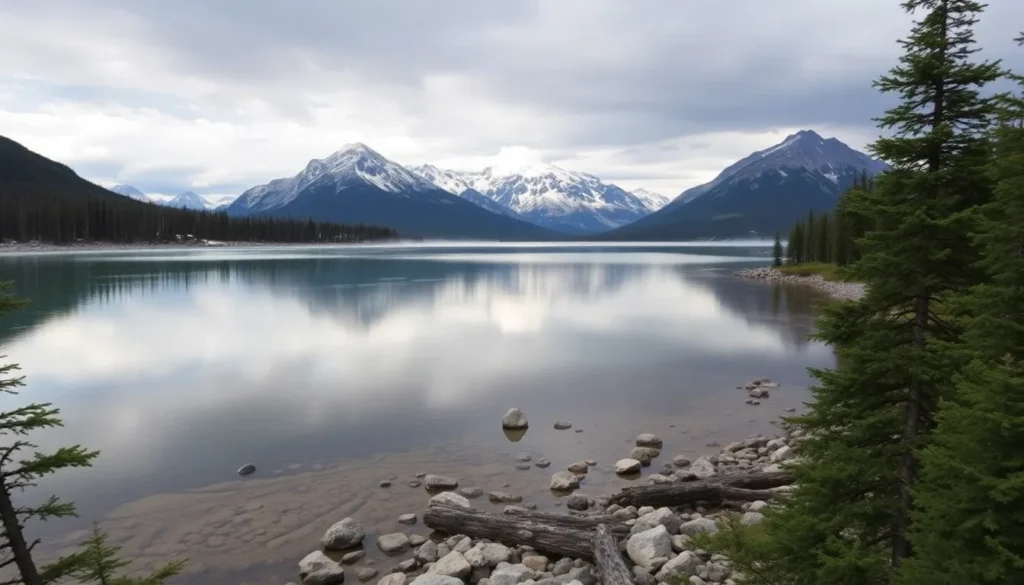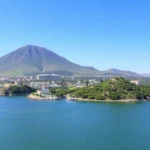Things to See and Do in Yoho National Park

When it comes to exploring the mesmerizing landscapes of Canada’s national parks, Yoho National Park often takes a back seat to its more famous neighbors, Banff and Jasper. However, don’t let its unassuming reputation fool you; this smaller gem of the Canadian Rockies is brimming with spectacular natural beauty. With its stunning lakes, breathtaking waterfalls, and captivating hiking trails, Yoho deserves a spot on your travel itinerary. Join us as we uncover the best experiences and sights that this park has to offer, including the top attractions in Yoho National Park.
Our journey through Yoho National Park coincided with our travels to Glacier National Park, traversing the scenic Trans-Canada Highway (Hwy 1). This highway stretches an impressive 7,821 kilometers, making it the longest national highway in the world, connecting the entire country from coast to coast. While our expedition is just one of many we dream of, the sights we beheld left a lasting impression.
Mapping Your Adventure Through Yoho National Park
Here is the map detailing the route we took, highlighting the must-see spots in both Yoho National Park and adjacent Glacier National Park, on our way to Revelstoke:
→ We stayed at the Glacier House Hotel in Revelstoke, a charming hotel that features a heated pool and stunning views of the surrounding mountains.
Exploring the Highlights of Yoho National Park
Here are some of the top attractions that you shouldn't miss while visiting Yoho National Park, ensuring you experience the best things to do in Yoho:
1. Spiral Tunnel Scenic Viewpoint
This viewpoint offers a unique experience unlike any other. Instead of typical views of lakes or mountains, here you can witness a fascinating engineering marvel. With a bit of luck, you might see a long freight train vanish into and emerge from the spiral-shaped tunnel. This ingenious solution was built to manage the steep grade along Cathedral Mountain.
2. Takakkaw Falls
The name Takakkaw means "magnificent" in the Cree language, and it truly lives up to its name. As the second tallest waterfall in Canada at 373 meters, it is a must-see. Unfortunately, access can be limited; it typically opens from mid-June to mid-October. To reach the falls, you'll drive along the picturesque Yoho Valley Road, a winding path through lush forests, before a short 10-minute walk leads you to the viewing area.
Takakkaw Falls is also the starting point for some incredible hiking trails, including the trek to Yoho Lake, Twin Falls, and the famous Iceline Trail, which offers a loop of approximately 20 kilometers. These trails are among the best things to do in Yoho National Park for those seeking adventure.
3. Emerald Lake
Emerald Lake is perhaps the most iconic body of water within Yoho National Park, and it’s easy to see why. This glacial lake, framed by towering peaks, boasts striking turquoise waters that mirror the surrounding landscape. While parking is conveniently located nearby, we recommend taking a stroll along the left shore for different perspectives. The complete circular path around the lake is about 5 kilometers, and you can even rent a canoe for a leisurely hour of paddling.
For those considering an overnight stay, the historic Emerald Lake Lodge offers comfortable accommodation with stunning views and delightful dining options. It's one of the top attractions in Yoho National Park, perfect for enjoying the serene beauty of the area.
4. Natural Bridge
The Natural Bridge is another highlight, located along the Kicking Horse River. This small waterfall features intriguing rock formations, including a natural bridge created by the river's flow. It’s an ideal spot to relax with a coffee and enjoy a picnic by the water, making it one of the more tranquil things to do in Yoho.
5. Field
Field is a quaint town located right on the Trans-Canada Highway, just before the turnoff for Emerald Lake. Home to a small population, this charming locale features picturesque wooden houses and a few cozy bed-and-breakfasts. We wandered through its four streets and discovered several delightful eateries, including The Truffle Pigs Bistro, known for its impressive culinary offerings.
In Field, you’ll find the Yoho National Park Visitor Center, one of the most informative centers we encountered during our trip, situated by a small lake with picnic areas. It was here that we spotted our last bears in the Rockies—a mother with her two cubs, one of which was climbing a tree! However, our encounter was cut short when a park ranger arrived to encourage them to move along. Notably, Field is located in British Columbia, which means you'll need to set your clock back by an hour—bonus time!
6. Lake O’Hara
Recommended by a friend as one of Canada’s most beautiful lakes, visiting Lake O’Hara requires a little more planning due to its limited access to protect its pristine environment. Reservations for the shuttle can be made through the Parks Canada website. You can reach the lake by taking a shuttle bus or hiking an 11-kilometer gravel path. The area offers numerous camping options, allowing you to explore the scenic trails over several days. Although we didn’t make it there, we are certain it is worth the effort and definitely falls under the category of what to do in Yoho National Park.
7. Wapta Falls
While Wapta Falls may not be as tall as Takakkaw Falls, with a drop of 30 meters, its impressive width of 150 meters makes it one of the largest waterfalls in British Columbia by water volume. To visit, you’ll need to take a 2-kilometer detour off the Trans-Canada Highway to reach the parking area, followed by a 2.5-kilometer hike to the lookout point above the falls. Continuing on will take you to the base for an up-close experience, showcasing another one of the best things to do in Yoho National Park.
8. Eagle’s Eye Restaurant
For a unique dining experience, the Eagle’s Eye Restaurant holds the title of Canada’s highest restaurant, perched at over 2,400 meters above sea level. However, this breathtaking view comes at a price: a gondola ride at Kicking Horse Mountain Resort costs around $110, which may be a bit steep for those on a budget.
What to See in Glacier National Park and Rogers Pass
After leaving Yoho, our journey continued through the breathtaking Glacier National Park, where we were surrounded by numerous glaciers. The best spot to appreciate this beauty is at Rogers Pass, a historic mountain pass situated at 1,300 meters that posed a significant challenge during the construction of Canada’s transcontinental railway.
In 1881, Albert Bowman Rogers, an employee of the Canadian Pacific Railway Company, discovered this crucial gap in the Selkirk Mountains, facilitating the completion of the railway. This area, along with Yoho National Park, was designated as a national park in 1885, making them the second and third oldest national parks in Canada, following Banff.
Rogers Pass is a fantastic place to rest, learn from informational panels about its history, and embark on hiking trails within the national park. Just a few kilometers south, at Illecillewaet Campground, you’ll find trails leading to the Illecillewaet Glacier, known as the Great Glacier.
1. Giant Cedars Boardwalk and Skunk Cabbage Boardwalk
These two short, accessible trails are perfect for enjoying the natural surroundings without too much exertion. Located adjacent to the highway, each takes less than half an hour to complete. The Giant Cedars Boardwalk winds through a forest filled with ancient cedars, some over 500 years old, covering 0.5 kilometers. The Skunk Cabbage Boardwalk leads through a marshy area that bursts into bloom with vibrant yellow flowers of the skunk cabbage plant as summer approaches.
2. Meadows in the Sky Parkway
During our night in Revelstoke, we made it a point to drive up the Meadows in the Sky Parkway, a winding road that ascends Mount Revelstoke. This scenic route spans 22 kilometers and features several viewpoints, but keep in mind that access closes at 5 PM. We managed to stop at a couple of scenic spots within the first 10 kilometers. A fee is required for entry, which is included in the annual national parks pass; otherwise, it is $7.80 for those without a pass.
These highlights showcase the incredible sights and activities available in Yoho National Park and Glacier National Park. As you can see, the wonders of the Canadian Rockies extend far beyond the famous attractions of Banff and Jasper, offering equally breathtaking experiences in this less-trafficked region. If you’re wondering what to do in Yoho National Park, these attractions are just the beginning!
For those planning a journey to this stunning part of Canada, it’s essential to consider travel logistics carefully. Here are some practical tips to help you:
- Check Road Conditions: Always verify the current state of the roads, especially in early or late seasons.
- Plan Accommodations: Booking in advance for hotels or campgrounds is advisable, especially during peak season.
- Pack Accordingly: Bring appropriate gear for hiking and be prepared for sudden weather changes.
- Safety First: Follow park regulations and wildlife safety guidelines to ensure a safe experience.
With its astonishing landscapes and diverse ecosystems, Yoho National Park is a treasure waiting to be explored, offering a wealth of experiences for nature lovers and adventure seekers alike. Don’t miss the chance to immerse yourself in the unspoiled beauty of this Canadian gem, and make sure to explore all the best things to do in Yoho National Park!




Deja una respuesta